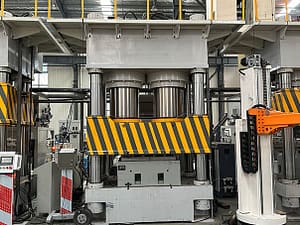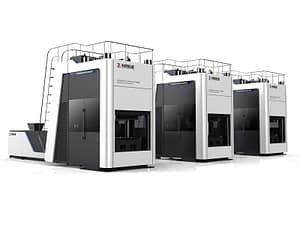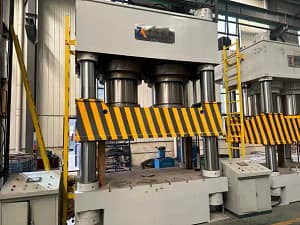Introduction
Plastic roof tiles have gained significant attention as a sustainable alternative to traditional roofing materials. Made primarily from recycled plastic, they offer durability, cost-effectiveness, and environmental benefits. This article explores the raw materials, key features, manufacturing process, market demand, and essential equipment needed for plastic roof tile production.
Raw Materials for Plastic Roof Tiles
Plastic roof tiles are mainly produced from recycled plastics, such as:
- Polyethylene (PE)
- Polypropylene (PP)
- High-Density Polyethylene (HDPE)
Some manufacturers incorporate sand and UV stabilizers to enhance strength, weather resistance, and longevity. Companies like EcoTiles use a combination of recycled plastics and stabilizers to create long-lasting roofing solutions (Plastic Smart Cities).
Key Features of Plastic Roof Tiles
The tiles offer numerous advantages over traditional materials:
- Durability – Resistant to UV rays, extreme weather, and corrosion.
- Lightweight – Easier to transport and install compared to concrete or clay tiles.
- Eco-Friendly – Made from recycled plastics, reducing environmental waste.
- Versatile Designs – Can mimic the appearance of slate, wood, or ceramic tiles.
- Cost-Effective – Lower maintenance and long lifespan contribute to savings.
Manufacturers like Brava Roof Tile offer high-quality plastic tiles that replicate the aesthetics of natural materials (Brava Roof Tile).
Manufacturing Process of Plastic Roof Tiles
- Plastic Collection & Sorting – Recycled plastic waste is collected and sorted by type.
- Shredding & Cleaning – The plastic is shredded into smaller pieces and washed to remove contaminants.
- Mixing & Heating – The shredded plastic is combined with sand and stabilizers, then heated to form a moldable mixture.
- Molding – The heated plastic is poured into molds and shaped into roof tiles.
- Cooling & Quality Control – The tiles are cooled, checked for defects, and prepared for packaging.
Market Demand for Plastic Roof Tiles
The global market for roof tiles is growing due to:
- Sustainability Trends – Builders and homeowners seek eco-friendly materials.
- Rising Plastic Waste Solutions – Converting waste into useful products addresses pollution concerns.
- Affordability – Competitive pricing compared to traditional roofing materials.
For example, AMABO in Cameroon transforms plastic waste into durable roofing solutions, showcasing the industry’s potential (AMABO).
Essential Production Equipment
Producing plastic roof tiles requires specialized equipment, including:
- Plastic Molding Machines – Used to shape melted plastic into precise tile designs.
- Plastic Recycling Machines – For shredding and processing raw plastic materials.
- Mixers & Heating Units – To combine and heat materials before molding.
- Cooling & Finishing Systems – To finalize the tile production process.
Efficient Production with PalletsBiz & PresswoodMachine
PalletsBiz and PresswoodMachine offer advanced plastic molding machines designed for high-efficiency plastic roof tile production. Their machines:
- Produce multiple tiles per cycle for enhanced efficiency.
- Allow customized mold designs to meet unique customer requirements.
- Provide a complete production line, from plastic shredding to final tile formation.
- Ensure fast installation & reliable after-sales service.
Conclusion
Plastic roof tiles are revolutionizing the roofing industry by offering a sustainable, cost-effective, and durable solution. With advanced plastic molding machines from PalletsBiz and PresswoodMachine, manufacturers can achieve high-efficiency production while contributing to environmental sustainability. As the demand for eco-friendly roofing grows, plastic roof tiles are poised to become a leading choice for modern construction.



